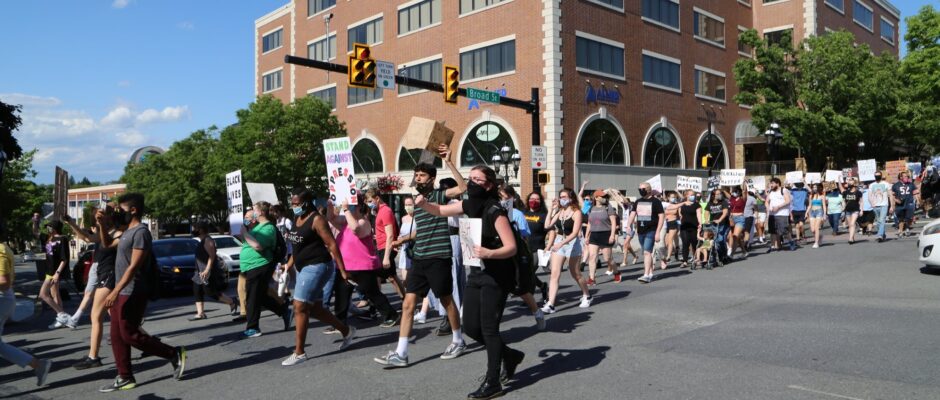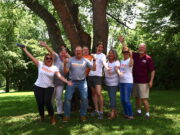The aerial view of Philadelphia on June 6, 2020 was extraordinary: Thousands of people packed the Benjamin Franklin Parkway from the Art Museum all the way to City Hall, protesting the deaths of black people like George Floyd at the hands of police. But if you think rallies for racial justice are a big-city phenomenon, you’re not seeing the whole picture.
“People gather together, [but] the next day, you don’t even know them,” says community activist Peggy Evans of the relative anonymity of joining a protest in a major city. “But it’s different in a smaller town.”
Evans was a co-planner and master of ceremonies at a June 6 March for Equality in her home town of Beaver Falls, PA, a city of about 9,000 people located 31 miles northwest of Pittsburgh. She estimates the event drew between 500 and 700 people — a turnout that surprised everyone.
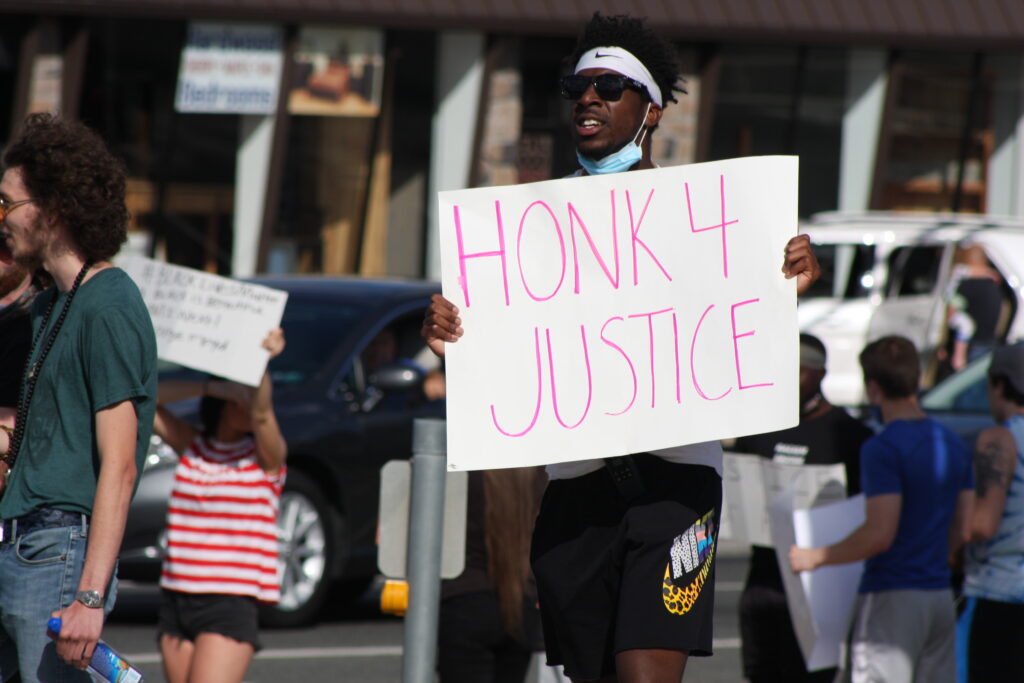
“Being a leader in a small town…people think they know you,” she says. “They know your cousin, they know your mom, they know your grandmother.”
While that familiarity can make it feel riskier for organizers in small towns to act, it also means that when they do act, it becomes impossible for neighbors to ignore.
“When you make a move as big as I did that day, it really means something to people,” says Evans of standing up at the march. “It’s just scary,” she says of violence against people of color. “I have two sons who are African American … They play outside. They ride their bikes.” She doesn’t want to fear for their lives in 2020, “so I make sure I stay active in the community.”
In her day job, Evans works for organizations that aid reentering citizens and people experiencing addiction. She’s already planning more community events, and does daily food delivery to local people in need.
How can we plan on resolving this big world topic if we can’t even do it in our hometown first?Jordan Rae Slaughter, Aston
“I represent Black Lives Matter,” she says. “But I’m not going to have your child’s back just because they’re black. I’m here for every last child.”
On the other side of Pennsylvania, Ashleigh Strange, a regional organizer with Lehigh Valley Stands Up, helped to plan a May 30 march in Bethlehem, one of many protests in the region. She worked alongside a group of college students — all majoring in criminal justice and 10 years her junior. Organizers were building off an existing enthusiasm. About two years ago, after a South Whitehall police officer fatally shot an unarmed Latino man named Joey Santos, Lehigh Valley activists organized a memorial march that drew 200 people to the scene of the shooting, near Dorney Park.
“The amount of threats that organizers and attendees got was astounding,” says Strange of that earlier action. “People were sending pictures of guns they had. People were saying they’re going to turn us into speed bumps.”
Rev. Dr. Gregory J. Edwards, who leads POWER Lehigh Valley — an interfaith movement devoted to dismantling racism and economic injustice; the group was a co-organizer of the Bethlehem march — also understands what’s at stake.
“There is a hate for acknowledging, and for interrupting and naming what I call the demon of white supremacy,” he says of the Lehigh Valley, calling it “the place that the civil rights movement skipped.”
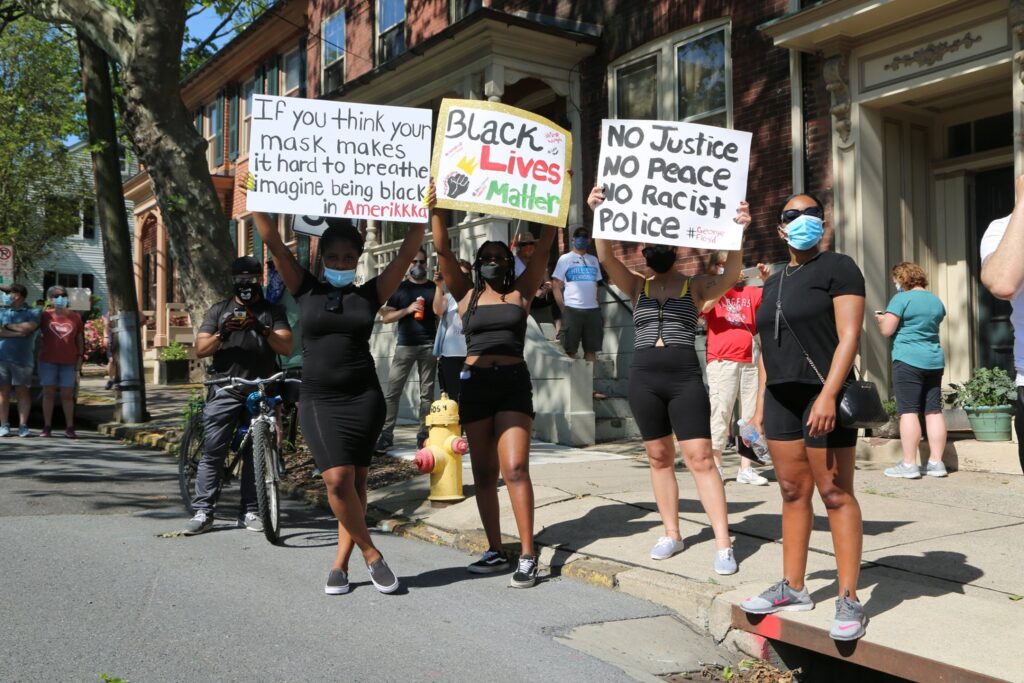
Unlike in Philadelphia, Pittsburgh, and many other cities, he notes, there’s a big gap between the racial demographics of the area and the representation in political and economic leadership. Take Allentown, the third-largest city in the Commonwealth: “A city that is over 70 percent persons of color, yet we have never had nor do we have governing leadership that reflects the diversity of the city.”
Strange says organizers were initially hesitant to promote the recent rally on social media, knowing first-hand the vitriol that could follow. But they decided to forge ahead. The response was overwhelming. People who were too worried about COVID to march donated water, masks, and snacks. The rally was scheduled to begin at 3 p.m. in Bethlehem’s Rose Garden Park, and people poured in hours early, dropping off supplies and helping to make signs.
The march to Bethlehem City Hall ultimately drew a crowd of about 1,000 people. Bethlehem police blocked off streets, and volunteers helped to keep people to one side of the route.
Black folks have had other people telling their stories too long. Now is the time to pass the microphone.Ashleigh Strange, Bethlehem
Strange spoke with one woman at the Bethlehem march who paid $30 for a Lyft from Easton to be there. Her reasons were personal: She had once been tased by police in front of her children.
“The reason why so many came out is that they’ve seen it,” says Strange of police violence targeting people of color in the Lehigh Valley.
“This movement is being led largely by queer youth of color,” she proudly adds. “Black folks have had other people telling their stories too long. Now is the time to pass the microphone.”
Once the Bethlehem march got going, “it was the most raw and joyous thing ever,” she recalls. Actions are ongoing in cities throughout the Lehigh Valley, many organized by local Black Lives Matter chapters.
Meanwhile, in southeastern Pennsylvania, Jordan Rae Slaughter, a 20-year-old Temple University-bound college student who lives in Aston, was organizing alongside her sister, 18-year-old Jalyn Monique Slaughter, and a group of about 10 local peers. Things didn’t go as they planned, but their experience highlights the need for their activism.
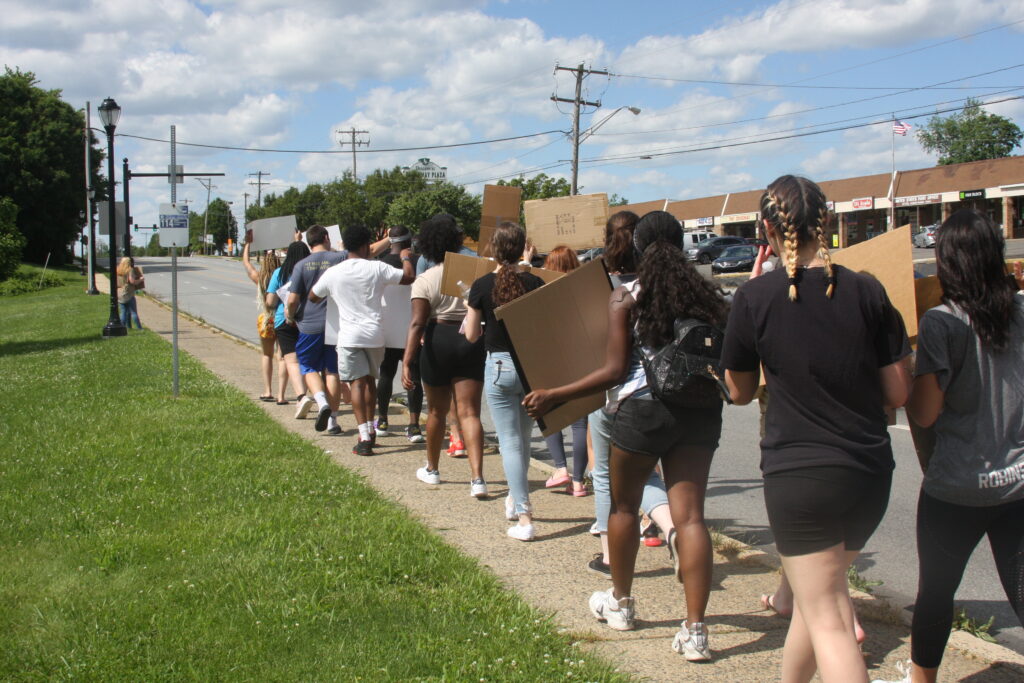
Originally, the group had planned a rally, with the cooperation of local police, at the Aston Community Center on May 31, in memory of George Floyd and others. But before it could begin, an Aston police officer the Slaughters had been working with came to their home. Worried by the looting that had followed early protests in Philadelphia, the police district requested that the students cancel their planned rally.
The students initially acquiesced, and instead held a May 31 meeting with Chester mayor Thaddeus Kirkland and others, which Jordan calls “a very effective conversation” about community action steps. Early that evening, the organizers decided to go ahead with a small, peaceful rally in Aston at an intersection known as Five Points.
When Jordan arrived, she joined about 15 or 20 protestors. A little later, a man driving a red jeep (later identified as Brian Setnick, 60, of Aston) with two young men in the car passed the group, shouting racial slurs and threats. The incident was caught on video and quickly went viral on social media. (Setnick has since been charged with ethnic intimidation, making terroristic threats, and harassment.)
Even more shocking than the verbal assault was realizing who was in the passenger seat of the car: Penn State student Sean Setnick, Jordan’s former classmate, who denies using racial slurs against his peers.

“Seeing pictures of what was going on in Philly, you see all the support,” says Jalyn of watching the widespread protests nearby. But in a small town like Aston, “you really feel like you’re backed into a corner … especially when [Brian Setnick] drove by and said all of that, we felt like we had the odds stacked against us.”
The group has support from young people, but “we had a lot of backlash from a lot of adults” who wondered “why do you want to bring this conversation to our town?” notes Jalyn, who’s headed to Delaware County Community College later this year.
Their team isn’t backing down. On June 12, they held a vigil as another way to show support for the movement.
“Some people are emotional, some want to scream and march,” explains Jalyn. “Not everyone is comfortable going to a protest.”
For the Slaughter sisters, it’s important to start at home.
“How can we plan on resolving this big world topic if we can’t even do it in our hometown first?” asks Jordan. “If I can change that first in my hometown, I can change it in another hometown. And another.”
More than 300 miles away, Peggy Evans agrees.
“One protest and one march aren’t going to change anything,” she says, but it does show that your neighbors “are here in the community for your lives.”
She urges others not to be afraid to get involved just because you’re in a small town.
“We’re here for something bigger than us all,” she says. “If something’s bigger than you, you do it.”
ALAINA JOHNS is a Philadelphia-based freelance writer and the Editor-in-Chief of BroadStreetReview.com, Philly’s hub for arts, culture and commentary.
